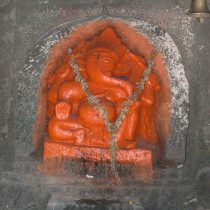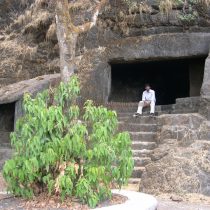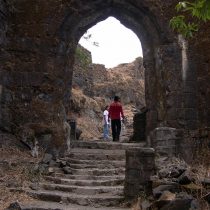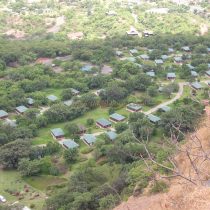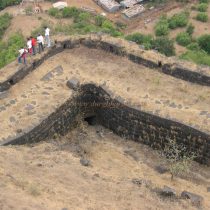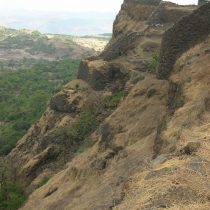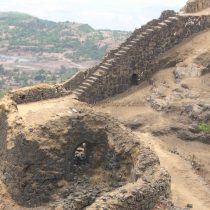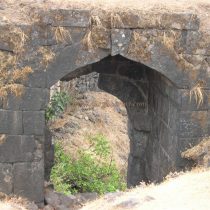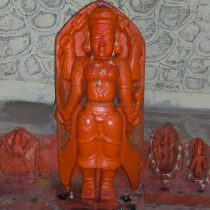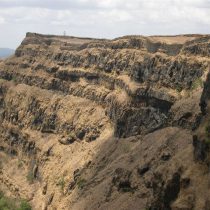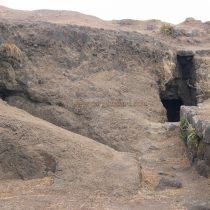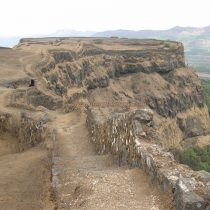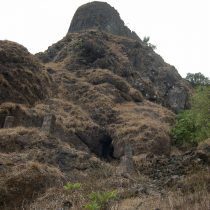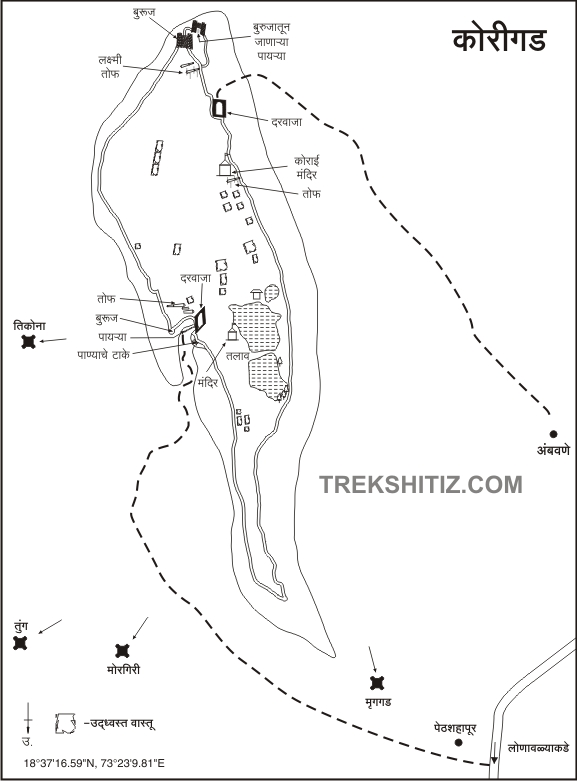KORAIGAD
TYPE : HILL FORT
DISTRICT : PUNE
HEIGHT : 3000 FEET
GRADE : MEDIUM
Near Mumbai Pune, towards the south of Lonavala, which is famous for its cool flow of air has a part of Pawanmaval and Paudkhore. This area is known as 36 Korbaras due to the 36 villages in this area which are located in the vicinity of Mulshi dam. This land which was once drought-stricken has now been enriched after the Sahara project and some wealthy people purchased this land. There are forts like Telbaila, Kailasgad, Korigad, and Ghangad in this area. Being on top of a wharf, this fort offers a wide view of the Konkan and the Desh at the same time. If you have a private vehicle with you, this fort is 22 km from Lonavla. Korigad aka Shahagad and Ghangad forts can be easily reached in one day. To reach Korigad, take a bus from Lonavla via Ambavane and get off at Peth-Shahapur or Ambavane village.
...
From the village of Ambavane, one can see the unbroken ramparts on the top of the fort. Peth Shahapur is a village with a market at the foot of the fort. The road leading to the fort from Peth Shahapur village is better than the road passing through Ambavane village and is also relatively easy. As there is no guarantee of getting water from the cisterns on the fort, water should be filled from the hand pump on the way. A straight path from the village takes you to the steps below the fort in half an hour. These steps were built by Sahara Group in 1995 in place of the original footpath leading to the fort. In twenty minutes we reach a cave carved in the rock. Inside this cave, there are two rooms, and Ganpati is carved in the adjacent rock. The upper part of the sculpture has an iron roof. Until 1980, there was a bastion in front of this cave and the frame of the door of this bastion was left, but now nothing can be seen here. After climbing a few steps from here, there is a water cistern carved in the rock. The water in it is drinkable. This is the only drinking water facility on the fort. On the left side, there is a small cave that has been eroded and a small water cistern can be seen at the bottom of this cave. Five minutes from here, we reach Ganesh Darwaza which is on the east side of the fort. Inside the door, there are guard porches on both sides, and at the right corner of the front door is another extinct north-facing door. The top of the fort is a plateau spread from south to north. Even if the fort has natural protection from rocks, ramparts have been built around the entire fort. The ramparts are still in good condition and with one exception, the entire fort can be traversed from the ramparts. The ramparts are lined with bastions and barrage for guns and cannons. There is a temple of Lord Shiva at some distance in front of the door and four cannons are kept in the temple premises. There are two small lakes behind the temple, in which moss is growing on a large scale and black scorpions are also present near this lake. So don't risk stepping into the water. There are remains of a mansion near the lake. There are some caves in the northwestern part of the lake. One of the caves has a water cistern carved in the rock and the water in it is drinkable. Here is the idol of Vishnu. From here you have to climb the bank of the river and go to the bastion with the flag on the north side towards Peth Shahapur village. From this bastion, you can see the path coming from Peth Shahapur village, in front, you can see the peak of Nagfani and Rajmachi. On the right, you can see Tung, Morgiri, and Tikona. Return from this bastion and come to the temple of Lord Shiva. From here, on the plateau, in the distance, you can see the restored temple of Goddess Korai. On the way to this temple, there is another temple of Lord Hanuman and behind this temple, there is a small lake carved in the rock. The idol in the temple of Koraidevi is old and the four-foot-tall idol has weapons in all four hands. According to the locals, After the conquest of the fort by the British in 1818, the gold ornaments of this goddess were taken to Mumbai and offered to Mumbadevi. There is a Deepmal in front of the temple and next to it is an idol of Mahishasurmardini. At the back of the temple, on a quadrangle structure, there is a big cannon named Lakshmi, which is 8 feet long. In front of the temple, at some distance, there is another well-maintained north-facing gate of the fort built on the lower side. If you come to the fort from Ambavane village, this is the way to enter the fort. Walking around the fort, one can see the remains of a large number of houses as well as another cannon. There are still a total of six cannons on the fort. The southern part of the fort has many bastions and the armored bastion at the southern end retains its uniqueness. This bastion is further strengthened by double fortifications. From this bastion, you can see Mriggad, Swashni Ghat, Waghjai Ghat, Telbaila, Mulshi Reservoir, and Sahara Group's bungalows. If you want to stay at the fort, the temple can accommodate four or five people. From here, when you reach Ganesh Darwaza, your fort round is complete. It takes an hour and a half to walk around the entire fort. Although not much history is known about the fort, the caves, and cisterns in the northwestern part of the fort bear witness to its antiquity. After the dissolution of the Bahamani kingdom, the fort joined the Nizamshahi during 1486-1490. In 1657, Maharaj conquered Korigad along with Lohgad, Visapur, Tung-Tikona forts. It is mentioned that the fort was conquered by the Mughals in 1700 AD. After this, when it came under the control of Peshwa, Ghangad was used to hold political prisoners. For three days in a row, 11, 12, and 13 March 1818, Colonel Prother rained down artillery on the fort and tried to burn it down, but the fort did not surrender. However, on March 14, 1818, one of the cannonballs fell on the gunpowder stock in the fort and the fort caught fire. The fort suffered heavy casualties and financial losses. Due to the destruction of the fort and the loss of life on the fort, the Marathas surrendered and had to leave the fort.
© Suresh Nimbalkar

